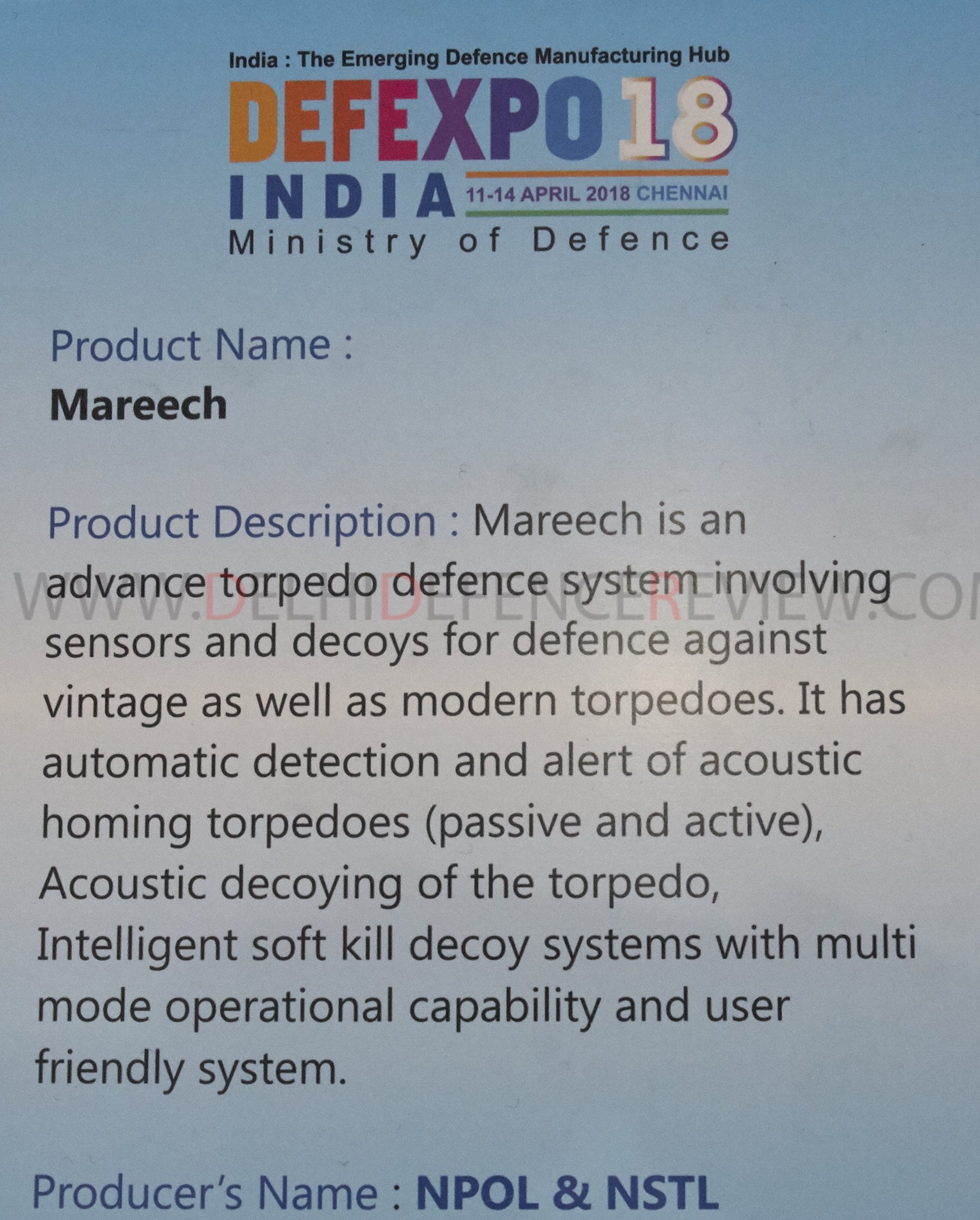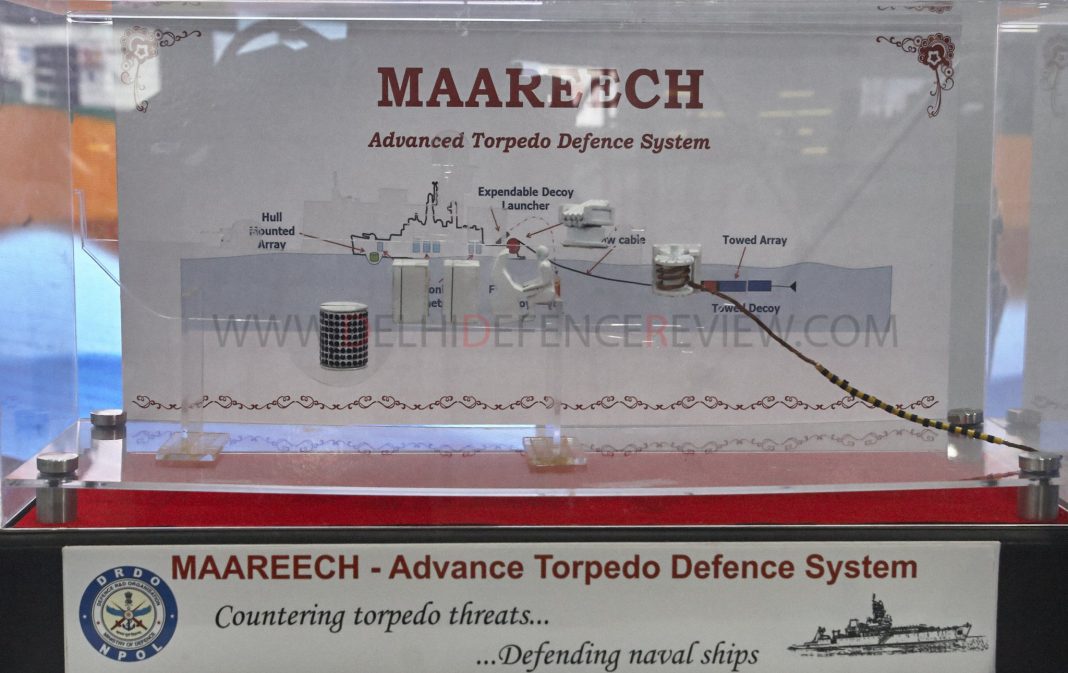On June 26, 2020, The Indian Navy (IN) formally inducted the Maareech Advanced Torpedo Defense System (ATDS) into its surface fleet. Developed as a joint project by the Naval Physical and Oceanographic Laboratory (NPOL), Kochi & the Naval Science & Technological Laboratory (NSTL), Vishakapatnam, both of which are a part of the Defence Research and Development Organization (DRDO), the Maareech will be serially produced by Bharat Electronics Limited (BEL).

Image: Expendable Decoy of the Maareech ATDS
‘Maareech’ stands for ‘Illusion’ in Hindi — and that’s exactly how this ATDS works. It creates the illusion of being a much larger target, so that an incoming torpedo’s seeker is lured away from its actual target. The system has four parts — wet end system, winch system, on-board electronics and system software. The Maareech ATDS’ business end however is a towed decoy that confuses an incoming torpedo.

Image: A Depiction of how the Maareech works
When a torpedo is fired at a ship, the Maareech system uses the ship’s on-board hull-mounted sonar systems to get an initial track of the target. Subsequently, once the winch is extended and the towed decoy is submerged, the integrated array in the towed array also starts tracking the target. This information is sent via fiber-optic cable to the software suite which is supervised by an operator. The towed array also sends speed, direction, depth and and ‘paints’ a track, with the expected time and position of impact.

So, as mentioned above, the Maareech ATDS system uses two kinds of sonar systems operated by the ship carrying it, the hull-mounted sonar and the towed array sonar. Both the sonar systems, work with intercept sonar sensors to create a firing solution for the expendable decoy. The shipborne expendable decoy system consists of a decoy launcher, a fire control system and, of course, the expendable decoys. Using contact motion analysis, the Maareech ATDS fire-control system comes up with a recommendation for the commanding officer to execute a decoy launch and navigate a course away from the incoming torpedo.
The decoy, when launched, works like a noisemaker – it completely overloads the seeker head of the incoming torpedo with a powerful acoustic signature. The incoming torpedo, upon receiving this signature, treats the decoy like another, much larger target, and immediately alters course away from the surface ship. The Maareech launcher has 40 expendable decoys.
Two production-ready Maareech ATDS systems have already been tested. Some eleven IN surface ships will be armed with this home-made anti-submarine warfare (ASW) suite, while many more ships are expected to only receive the dry end (decoy launcher, sensors and fire-control system). The Maareech ATDS is considered among the best in the world because the countermeasures algorithm can detect and confuse almost every single torpedo ever made , whether modern or vintage. Additionally, it can also shield a surface vessel against multiple launches at the same target.
The system was first mentioned in the media in 2011 in a feature listing out the DRDO’s current projects. In 2018, the then Defence Minister, Manohar Parrikar had handed over the Maareech system to the IN at NSTL.
Adreesh Ghoshal is an automobile engineer with a deep interest in defence technology. He lives in Mumbai.
© Delhi Defence Review. Reproducing this content in full without permission is prohibited.
































